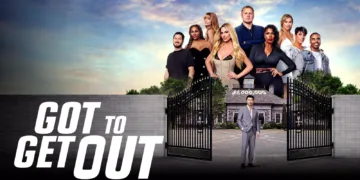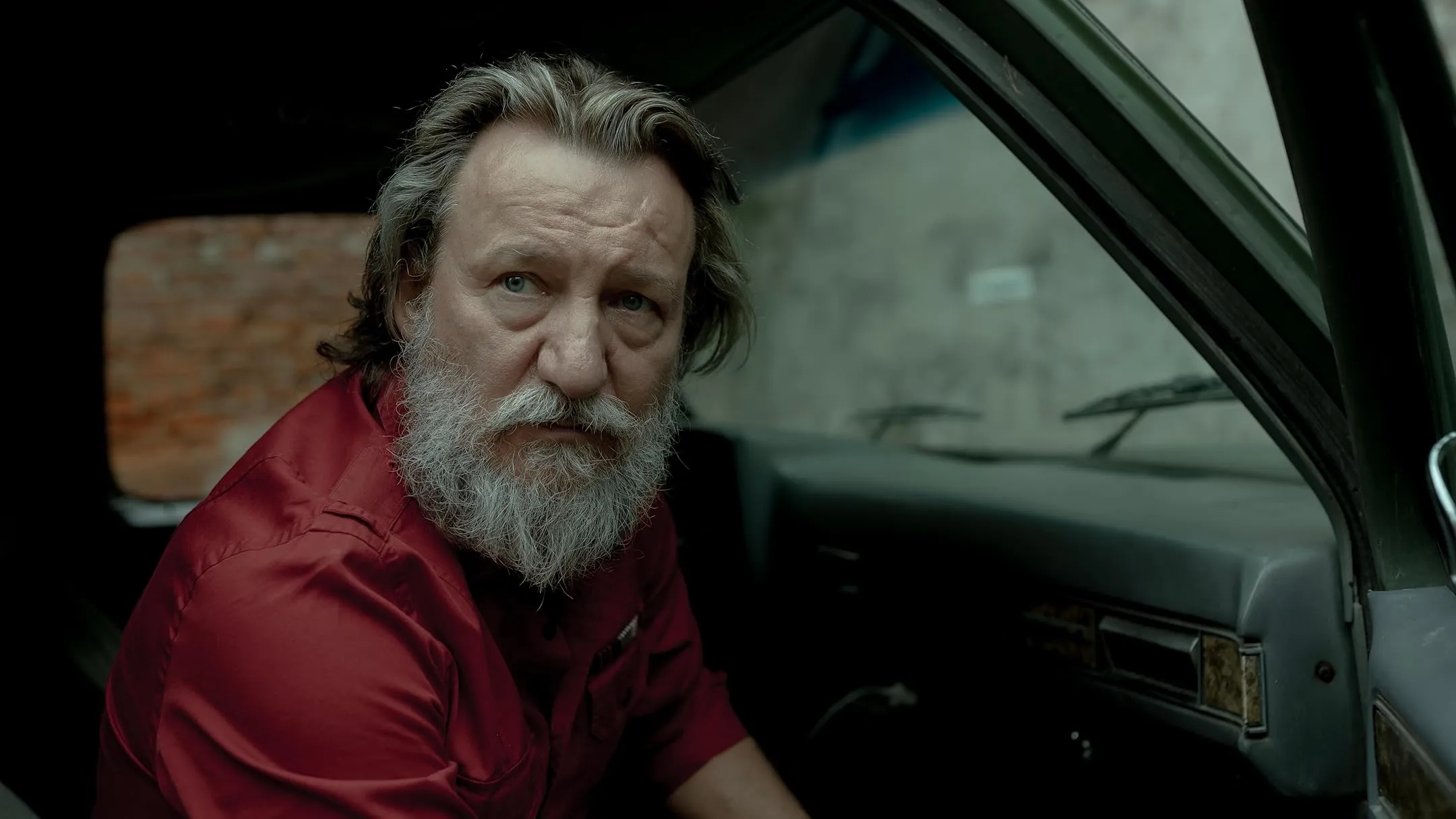The series situates itself in the enigmatic town of Zybork, a place where weathered streets and timeworn architecture create a backdrop laden with unspoken secrets. In this setting, a long-ago tragedy—the untimely death of Daria—continues to reverberate, its impact casting a lingering shadow over the town’s inhabitants.
A seemingly innocuous postcard emerges as a catalyst, drawing Mikolaj, a successful writer, back to the town he once fled. His return, accompanied by his investigative partner in life, Justyna, sets the stage for an exploration of both personal history and community wounds.
Mikolaj’s journey is portrayed with a nuanced balance of personal introspection and a broader inquiry into the fabric of small-town society. The narrative juxtaposes his internal struggle with the external chaos stirred by recent brutal incidents. This dual narrative method compels the viewer to consider how unresolved pasts can shape contemporary realities.
With each twist in the investigation, the series reveals layers of familial discord and communal mistrust, prompting reflection on how historical events and personal choices can intertwine in unexpected ways. Even as the plot thickens with unexplained deaths and covert investigations, an ironic undercurrent suggests that sometimes, even in the midst of mystery, life in Zybork finds a way to persist with a wry sense of humor.
Interwoven Timelines and Unconventional Storytelling
The series experiments with its narrative by interlacing past and present events in a manner that redefines traditional storytelling. Flashbacks serve as vital puzzle pieces, revealing pivotal moments from a bygone era that continue to influence current events.
Each retrospective glimpse functions as a key that unlocks the characters’ hidden motivations and longstanding resentments, providing viewers with a layered understanding of the unfolding drama.
A measured pace governs the series, where the buildup of tension relies on prolonged, atmospheric pauses interspersed with unexpected jolts of revelation.
These measured intervals give room for the audience to absorb the intricate web of details, while sudden instances of dramatic action capture attention, reminding viewers that no moment is wasted. The timing of each narrative beat is carefully calibrated to maintain engagement, ensuring that suspense is consistently nurtured throughout the episodes.
The dual narrative structure distinguishes the series by presenting two simultaneous investigations: one that probes the cold case of a long-forgotten murder and another that unravels recent brutal crimes.
Subplots involving domestic strife, political maneuvers, and personal vendettas enrich the storyline, creating an intricate network of conflict that mirrors societal shifts and cultural tensions. This layering of plotlines offers a multidimensional portrayal of a community grappling with its haunted past and a tumultuous present.
Narrative devices further enhance the storytelling, with symbolic imagery such as the recurring figure of the elderly woman donning a funeral headpiece and cryptic cues like “two one eight” playing significant roles in shaping the mystery.
Character-driven dialogue and introspective narration anchor the viewer’s experience, inviting a thoughtful reflection on the interplay between personal history and collective memory in an era marked by rapid cultural transformation.
Characters in Conflict: Personal and Community Dynamics
Mikolaj Głowacki emerges as a figure shaped by a troubled past and a drive to uncover hidden truths. His evolution from a haunted individual to a resolute investigator and writer captures a transformation marked by inner remorse and a quest for understanding.
His personal struggles are not isolated; they mirror the fissures within his family and the town. His interactions are layered with unspoken regrets and a determination to confront longstanding injustices.
Justyna occupies a dual position in the narrative. As a devoted partner, her support grounds Mikolaj while her investigative spirit propels her into uncovering the dark corners of Zybork. Subtle hints of personal secrets surface, suggesting a depth that transcends her role as a reporter. Her actions, marked by quiet persistence, highlight the nuances of balancing professional duty with personal life in a setting marred by historical wounds.
The familial web is intricate, with Tomasz standing out as a commanding figure whose relationship with Mikolaj is fraught with tension. His demeanor and authoritative air stir discord, reflecting a legacy of unresolved conflicts and disputed power dynamics.
Figures such as Agata and Sebastian contribute their own shades to this portrait of a divided family. The fractured bonds among these characters form a background that continuously affects the narrative’s unfolding mystery.
Interactions among the residents of Zybork add further complexity to the story. The collective history of the town is visible in every conversation and every suspicious glance exchanged in narrow alleys. The mutual suspicion and cautious trust shared by the townspeople create an environment where personal histories are intertwined with communal secrets.
This intricate network of relationships paints a picture of a community where every individual holds a piece of a much larger puzzle, urging the viewer to consider the interplay between personal grievances and the shared legacy of a troubled past.
Shadows and Signs: Themes, Motifs, and Symbolism
The series positions its plot as a story of retribution where actions taken in anger leave deep marks on those involved. The use of a rape-revenge storyline is evident, with the consequences of that brutal act rippling across the characters’ lives.
The memory of a past tragedy hangs heavily over every decision, a reminder that unresolved wounds can shape the present in unexpected ways. Personal loss and unresolved grief serve as catalysts, driving characters to confront their inner demons while engaging with a wider social dialogue.
Visual elements are carefully chosen to add extra meaning. Repeated images, such as that of an elderly woman clad in ceremonial attire, spark curiosity and evoke a sense of inevitability.
Cryptic symbols, like the recurring numeric clue “two one eight,” function as subtle markers of hidden truths waiting to be uncovered. These details operate as quiet comments on a society that often hides behind masks, forcing viewers to question what is seen and what is left unsaid.
Attention to the portrayal of gender roles is notable, with the script subtly questioning dominant male behavior. Moments of power struggles and moments where strength is redefined hint at deeper critiques of traditional masculinity.
The production design and casting decisions contribute to this conversation, suggesting that the series is as concerned with reflecting current social debates as it is with presenting a suspenseful story. The interplay of these themes and symbols sets up a conversation about cultural shifts and challenges longstanding narratives in television.
Shadows of Zybork: A Visual and Auditory Experience
Lighting and sound shape an atmosphere steeped in melancholy and mystery throughout the series. In Zybork, every muted hue and hushed tone contributes to a feeling of isolation and concealed peril.
Dim lighting paired with a subtle background score sets a stage where quiet spaces speak loudly, and each flicker of shadow hints at unspoken histories.
The town of Zybork appears almost alive, its weathered streets and timeworn buildings acting as silent narrators of forgotten secrets. Narrow lanes and worn facades evoke a sense of lingering memory and hidden rivalries. Architectural details—crumbling brick, aged signage, and time-stained textures—serve as visual cues to the community’s deep-seated divisions and long-held grudges.
Visual storytelling finds its strength in careful camera work that captures brief, meaningful expressions and lingering shots of deserted corridors. The production team uses set details to mirror the internal conflicts of its characters.
Thoughtful editing and precise sound mixing ensure that every subtle clue, whether the soft murmur of a passing breeze or the echo of distant footsteps, reinforces the tension woven through the narrative.
Technical aspects such as sound design, editing, and set decoration work in concert to create an immersive environment. This approach not only heightens suspense but also encourages viewers to consider how physical spaces can shape individual identities and foster secretive dynamics.
Every technical choice contributes to a sensory experience that invites reflection on the interplay between a decaying environment and the personal histories embedded within it.
Adaptation and Social Commentary in Focus
Based on Jakub Zulczyk’s novel, the series converts literary material into a screen narrative that respects its source while incorporating necessary changes for a visual medium.
The adaptation preserves central narrative arcs and character developments, maintaining core themes and emotional struggles even as it adjusts certain relationships and plot turns to suit modern audience expectations and streaming formats.
The series integrates commentary on contemporary societal issues by examining the state of journalism, political corruption, and the pressures of urban redevelopment. Character interactions and background settings spark a discussion about personal trauma and the decline of community values, creating a dialogue between historical memory and current social dynamics.
Casting choices and production techniques signal a shift toward greater inclusivity, with production design reinforcing a strong sense of place that anchors the narrative’s exploration of social and political dilemmas.
The adaptation’s method of merging literary depth with the immediacy of visual storytelling produces moments of tension and reflection. Its narrative structure responds to modern streaming trends by balancing slow, deliberate exposition with unexpected twists that highlight a refreshed approach to television storytelling.
The Review
Hound's Hill Season 1
Hound's Hill Season 1 challenges traditional TV formulas with its layered narrative and keen social observations. Its immersive production and character depth spark meaningful discussion on modern societal issues, even as uneven pacing and convoluted plotlines occasionally hinder engagement. A provocative, thought-provoking experience that signals a shift in streaming storytelling.
PROS
- Strong social commentary
- Intricate character arcs
- Immersive production design
CONS
- Uneven pacing
- Overly complex narrative at times




















































